Many motocross enthusiasts dream of having their dream track. However, for teams and brands, it is more than just fun; it is a strategic advantage.
It doesn’t matter if you are looking for a place to practice as a team or want to create an iconic motocross track for promotional events; having a personal motocross track ensures that riders can put all their skills to the test without holding back.
If you want to know more, follow along as we cover everything in this detailed guide. From budgeting to finding the perfect location and incorporating features according to your driver’s skill needs, we have your back! So, let’s just dive right in!
Why Build Your Own Motocross Track?
If you think having your own motocross track will help cut back costs and save you from gruesome long drives to the public motocross tracks, then you might be wrong about that. Having a private motocross track is more than just that.
For professional teams, it is an opportunity to build a motocross track more suited to the skill level of their drivers so that they can practice the skills required for their competition. Moreover, having a personal track means you can promote your band to a wider range of people.
You can showcase your products, whether they be motorcycles, gear, or services. A branded motocross track is the fastest way to demonstrate the quality of your equipment, which will speak volumes to your targeted audience.
Thus, the track should be not only a place for the drivers to push their limits without any repercussions but also a place for your brand to make a name for itself.
Further Reading: How fast do dirt bikes go?
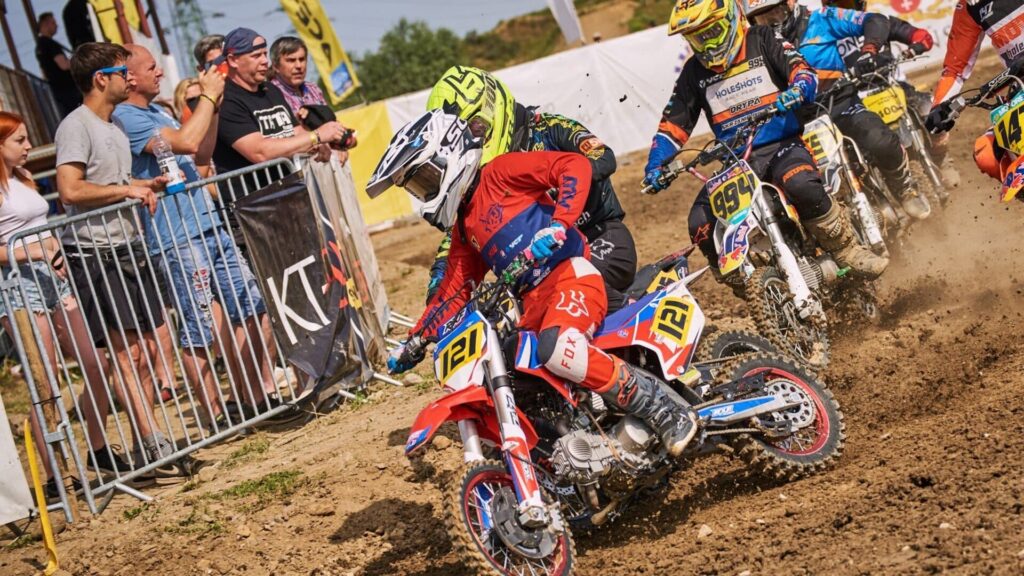
What Are the Key Factors in Designing a Motocross Track?
Before you start working on building on your motocross track, here are a few things to consider:
Rider Skill Level
Whether you build it for a professional team or a development program, your track needs to be built based on the rider’s skills. Simple backyard motocross track designs are to look a lot different than a motocross track designed for professionals.
You could also opt for a multipurpose track with separate sections aimed at different skill sets. This will allow your team to familiarise themselves with different skill levels and challenge themselves to various degrees of difficulty while having a safe space.
Promotions are a great way to utilize the track for brand promotions. You can have a section with smaller and safer jumps for beginners or doubles for the experienced.
Terrain and Natural Features
Making use of the features of different racing terrain is one of the best ways to get your motocross track to be cost-effective yet efficient. Taking advantage of the natural hills can make for jump sections, while the valleys can be drop-ins that are sure to stun. By doing this, you cut construction costs and make a track that is uniquely yours.
If you are building a motocross track for promotional purposes, then the terrain can also be modified to reflect your brand’s personality. A daring course with sharp corners and fast elevation changes can showcase the fierce and adventurous persona of your brand. However, if your brand is more casual and fun, you could always make your course with smoother transitions and safer landings.
Local Regulations and Permits
Building a motocross track requires more than just a place. You need to be aware of the legal constraints and procedures that come with building a track. Every place has its own rules and regulations, so you need to keep those in mind before starting. It is best to look at all the legal regulations you need to get approval from local authorities.
If you wish to use your motocross track for promotional events or public practice sessions, you must consider noise regulations, liability concerns, and environmental impact. Failure to address these concerns may result in fines or even the closure of the dirt bike path.
Therefore, you must get the paperwork done right from the start to protect your investment. Regarding teams or brands, you surely don’t want bad press due to local legal issues.
How to Choose the Right Location for Your Track?
What Size and Space Do You Need?
The space you require depends on the number of riders you plan to accommodate at a given time and the features you want. A private motocross track doesn’t need to be as big as a competitive one; however, it needs to be big enough to have different sections.
A typical backyard dirt bike track might require 3 to 5 acres of land, while professional motocross tracks can require 10 acres or more to accommodate jumps, rhythm sections, and different skill-level areas.
How Important Is Terrain Type?
The terrain you plan to build your track on plays a huge role in the performance and features that can be accommodated. Flat terrain is easier to build on but lacks the excitement of hilly terrain.
Moreover, having a flat land means that you will require a lot more dirt to create the jumps, which will add a little challenge to the motocross track. This extra cost and time is naturally saved if the terrain is hilly.
A varied terrain is a better simulation for teams to practice real races; however, brands prefer a more exciting terrain to garner attention and attract spectators.
What Soil Does Your Motocross Track Need?
Even soil plays a vital role on your motocross track, as various soil types have advantages and challenges. If the soil is sandy, it will drain well; however, it will be tricky to manage. Clay soil, on the other hand, does hold its shape but becomes a mud bath when wet. Therefore, a combination of sandy and clay sand is preferred to have a solid surface that drains effectively.
Sandy Soil: Has the tendency to dry quickly and so does not become mud; however, it needs consistent management.
Clay Soil: Holds its shape and helps keep a firm footing for the dirt bike tires but becomes very muddy when wet.
Mixed Soils: The best results are obtained with sand and clay. This soil is durable and drains well.
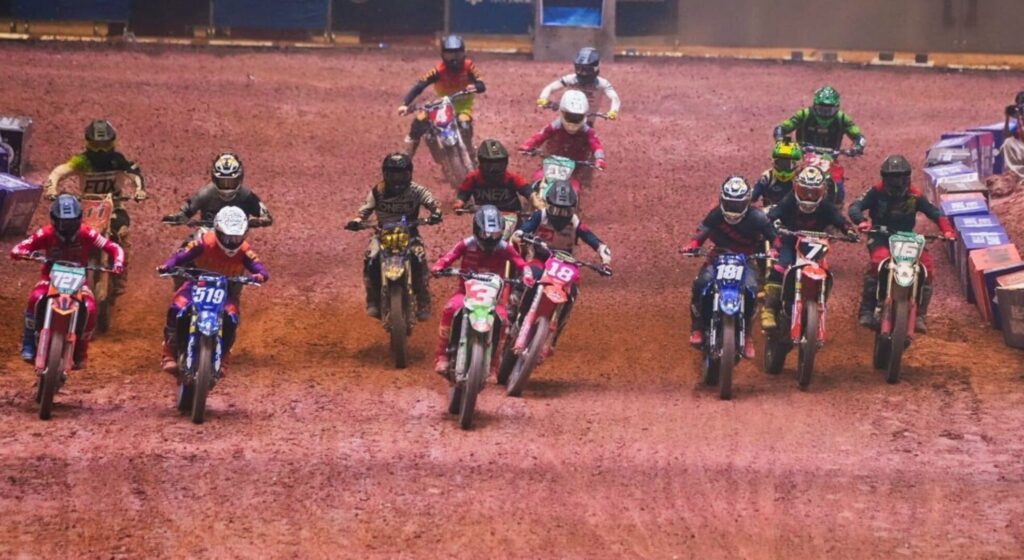
Accessibility and Nearby Amenities
Aside from the track, there are many other things you need to consider. That includes a parking space where your team members, riders, and visitors will park their cars or have their trailers. Moreover, you also need to consider the amenities, such as restrooms and snack bars.
Furthermore, you also need to make sure that the track is easily accessible for your team members and riders. A track hours away from the city could make it a hassle to access regular training.
How to Maintain the Surface for Longevity and Safety?
Maintenance is an everyday need, especially for teams that use the motocross track for practice or competitions every day. Therefore, after every session, upkeep of the motocross tracks, such as filling in ruts and reshaping jumps, is needed. Moreover, watering the motocross track maintains a consistent surface and helps prevent dust accumulation.
Equipment and Methods for Track Construction
What Equipment Is Needed to Build a Motocross Track?
To make a motocross track, you need more than just an idea and a shovel. You require heavy machinery and an expert to plan and map out your motocross track.
Brands or teams should invest in regular access to this equipment, especially if they plan on maintaining the track themselves. Building a motocross track is one thing; however, maintaining and keeping it in pristine condition is another.
How to Build a Dirt Bike Track? Step-by-Step Process for Building Jumps and Obstacles
Step 1: Prepping The Site
The motocross track site needs to be clear of any trees, bushes, or large rocks that can come in the way of construction. The ground then further needs to be leveled for a smooth, solid base. If the natural terrain already has exciting features such as hills and valleys, then they can be utilized to make your dirt bike track design.
Step 2: Layout Planning:
Mark the places you want the jumps, berms, and turns to be with a flag or stake to get a clear idea of where you want your obstacles.
Step 3: Building Jumps:
Always start small when building jumps and work towards the bigger ones. For beginners, a tabletop jump is a safe option. You can consider adding double or triple for more advanced riders. No matter the jump, ensure a smooth launching angle and a flat landing area to avoid mishaps.
Step 4: Shaping Berms:
Berms allow riders to maintain their speed during turns. While berms act as a visual for brands’ promotions, teams use them to practice corner techniques for competitions.
Step 5: Smoothing It All Out:
After all the work is done and obstacles are put in place, ensure the surfaces are smooth and rideable. Carry out tests to ensure safety and recheck all the small details.
Budget Considerations: How Much Does It Cost to Build a Motocross Track?
The cost of construction associated with a motocross track isn’t cheap; however, if planned right, it is an investment that will be worth it in the long run. The results will be in the form of improved driver performances or wider brand awareness. Below is a rough estimate of all the costs:
- Land clearing and grading: $1,000–$5,000, depending on the size and condition of the land.
- Equipment rental: $1,500–$3,000 per week.
- Dirt and fill material: $500–$2,000, depending on what’s available on site.
- Construction crew: If you don’t plan to do it yourself, you may need to hire a team, which could add $2,000–$5,000 to your budget.
Total costs could range from $5,000 to $20,000 or more, depending on how large and complex you want the dirt bike path to be.
How to Design the Motocross Track Layout for Best Performance?
Start/Finish Line
For your dirt bike track design, you need to see that the start and finish lines are visible from the vital viewing places. This is necessary, especially if the motocross track is meant for brand events and races. The start and ending areas should be flat and accessible for a fair and smooth race.
Jumps, Berms, Turns, Straightaways
The flow of your race determines how exciting the race is going to be, so the jumps, berms, turns, and straightaways need to be designed strategically. These aspects give teams a chance to compete and analyze skills while they serve as entertainment in the brand events and give the viewers a thrilling show.
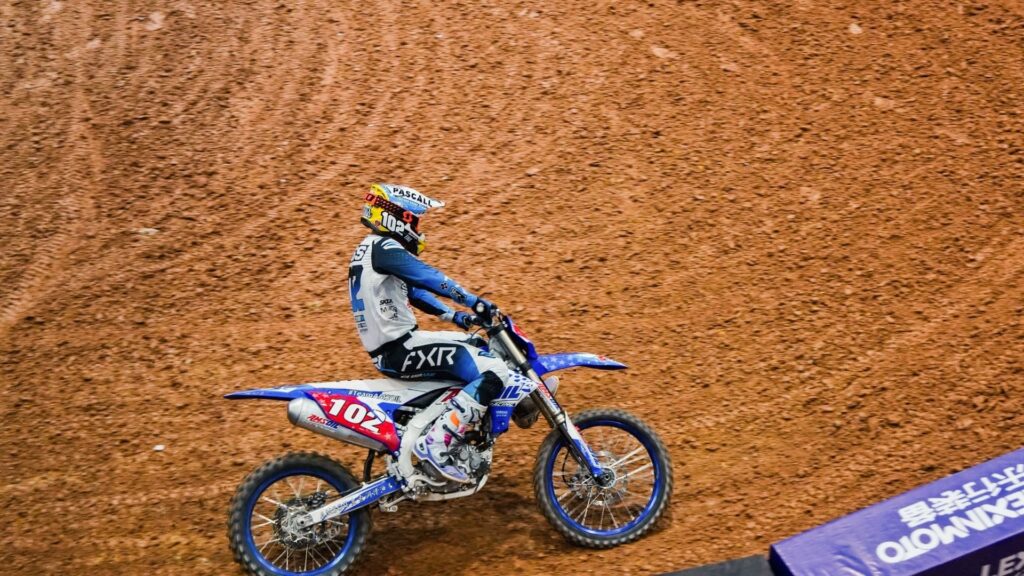
How to Create Flow and Balance for Different Skill Levels?
Like in all aspects, balancing enjoyment and performance is crucial. Overwhelming the dirt bike track with numerous obstacles can be too much for the riders, while having none can have the opposite effect, making the motocross track boring.
In the case of brands, the dirt bike track design needs to have challenging obstacles but also needs to be focused on maintaining a visual appeal, which is often through smooth transitions. Therefore, motocross tracks should allow riders to recover between jumps while testing their skill.
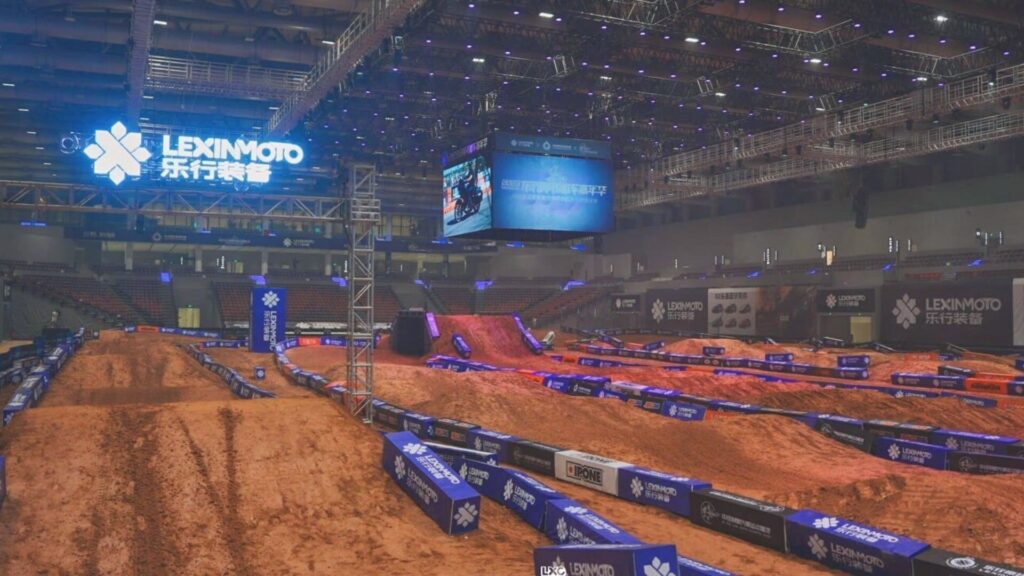
How to Build the Best Jumps and Obstacles for Your Motocross Track?
Safe Construction Techniques for Jumps
Planning your jumps and obstacles should be according to your needs. When building for a team, the jumps need to be consistent and identical to the ones they will encounter in real races. For brands, however, the jumps need to be impressive yet safe so that riders are tempted to return and spectators have something to talk about
- Tabletops: A beginner jump is the perfect starting point for riders of all levels, as it offers a flat landing area.
- Whoops: This jump contains a few bumps that challenge a driver’s skills to maintain stability and speed.
- Rhythm Sections: Incorporates a combination of jumps and bumps that require the expertise of a driver to navigate through smoothly.
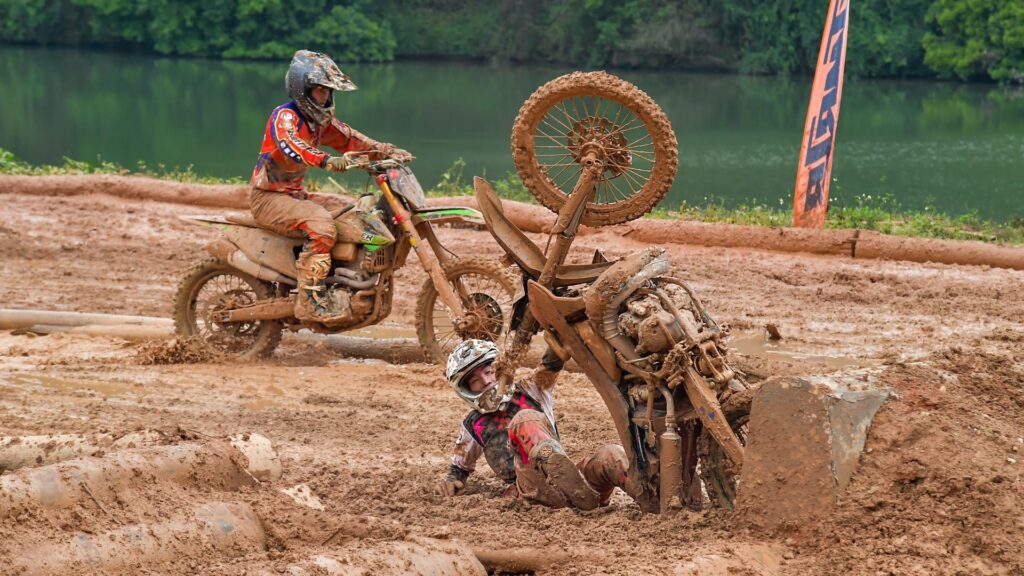
Creating Berms and Turns for All Riders
Berms are a feature that assists riders in maintaining their speed through the corner. For teams, berms help practice tight turns while brands utilize them to be sculpted into visually impressive features.
What Safety Features Should Be Implemented on the Motocross Track?
Rider Protection
Barriers: Teams need to ensure the safety of their riders, so barriers are vital to preventing accidents on the motocross track.
Track Visibility and Signage: Warn drivers using signs of any sharp turns or jumps up ahead. This is to keep the motocross track visible for riders so that they are safe.
Spectator Safety
Fences: For brands, on the other hand, adding fences keeps the spectators at a safe distance from the motocross track and protects them from runaway bikes.
Emergency Measures: When having a brand truck, ensure that there are designated safe corners for the public personnel and a clear path for emergency vehicles to reach the track without any obstructions.
Track Safety
Drainage: Good drainage prevents water from pooling, damaging the dirt bike track design and making it unsafe. Therefore, installing culverts or ditches is essential to channel water away from the riding surface.
Maintenance: Safety should always be the number one priority, and therefore regular maintenance is needed. You can add fresh soil to prevent erosion on the track and also plant grass or other vegetation around the perimeter of the motocross track to keep the soil in place.
How Can a Professional Manufacturer Support Your Motocross Team?
Aside from having a great motocross track, high-quality gear, and equipment are just as important for teams or brands. If you are looking for a reliable wholesale motocross bike manufacturer, then Bosuer might be the one for you. At Bosuer we strive for excellence, and so every gear and bike is designed for success.
Constructing a motocross isn’t just an ordinary task but rather an investment into your team or brand’s future. Build your motocross track today—where champions are made, and brands are showcased.
